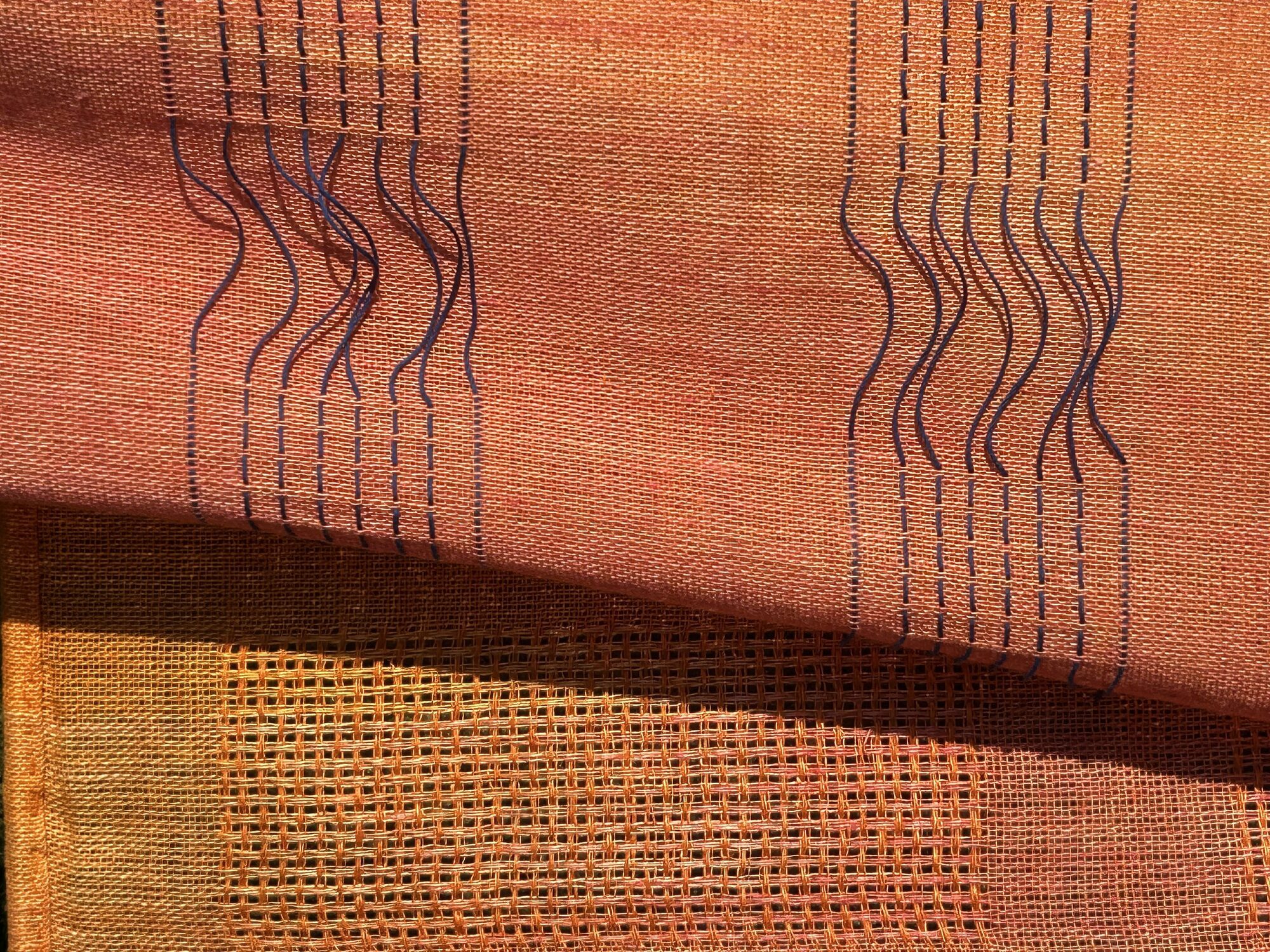Layers of Light
Category: Interior
My degree collection, consisted of a series of interior window treatments, focuses on creating textiles that blend aesthetics and functionality. Centred on the interaction of light, colour, and texture, it explores how transparency and opacity can shape a room’s atmosphere by balancing natural light with privacy. Through soft shadows and shifting gradients, it brings warmth and colour into interior spaces. A major focus of my project was ensuring that every stage of the design process reflected a strong commitment to sustainability. From the beginning, I was determined to make considered, responsible choices. I spent a significant amount of time researching the environmental impact of different fibres, finishes, and production processes. My aim was to create a body of work that was not only visually and emotionally engaging but also aligned with values of environmental care and circularity. One of the most important decisions I made was to use only cellulose-based yarn, which supports easier recycling at the end of life. I initially chose yarns such as viscose and linen, which have a lower environmental impact compared to more resource-intensive fibres like silk or polyester. Sourcing these materials involved a long and careful process. I researched suppliers in depth to ensure that the yarns I selected were responsibly produced and traceable. During my material research, I discovered TENCEL Lyocell, a fibre produced by the Austrian company Lenzing. It stood out as an ideal choice due to its strong sustainability credentials. It is made in a closed-loop production process where water and solvents are almost entirely recycled, significantly reducing environmental impact. I was especially drawn to it because of its softness, drape, and subtle sheen, which reminded me of silk, a material I had previously loved working with. However, I was committed to using only cellulose-based fibres in this project, and Lyocell felt like the perfect alternative. After researching Lenzing and their practices, I reached out to the company directly to ask about sourcing yarn. They informed me that they don’t supply directly to individuals, but I had already decided this fibre needed to be part of my collection. Determined to find it, I eventually sourced it through a seller on Etsy. I completely avoided the use of synthetic fibres and stayed away from unnecessary treatments or finishes. Every fibre was selected with the full lifecycle of the product in mind. This collection reflects my belief that sustainability should never be an afterthought, it should be embedded into the design process from the very beginning. Thoughtful design and environmental responsibility can, and must, work hand in hand.
Download PDF 1 Download PDF 2 Download PDF 3 Download PDF 4 Download PDF 5 Download PDF 6

 Copy URL
Copy URL
 Login to Like
Login to Like 